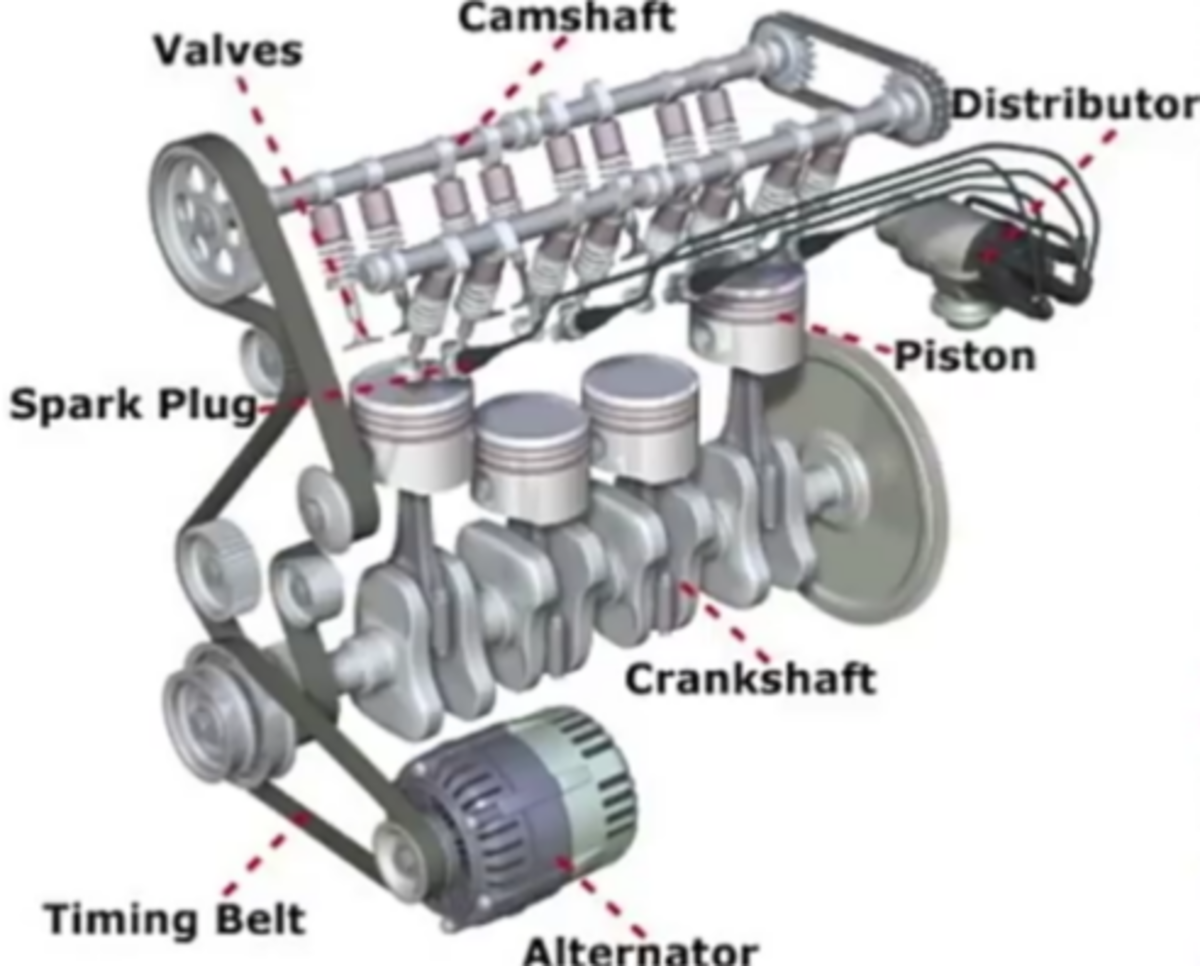The Superior Nature of German Engineered Automobiles
The focus of most automobile enthusiasts lies within a single area, and that area is performance. Performance is defined as the “manner in which something functions” (Dictionary.com). When referring to automobiles, performance refers to how well a car operates, or more specifically, how well it handles and how much power it delivers. In the area of performance, German automobiles are far superior to their American counterparts.
German automakers have had a focus on performance from the beginning of the automobile age. A major advance in automotive performance came from the German inventor, Nicholas Gustau Otto, who devised the internal combustion engine, which made the engine small enough for easy mobility (Brown 6). Gottlieb Daimler and Carl Benz were dubbed the automobile’s “fathers” with their developments in 1888 (Automobiles: The First Experiments). They were the first to use an internal combustion design like this to power a car. German automakers have been perfecting the performance of their automobiles long before American automakers have.
The key to the superior performance in German vehicles is the engine design. German manufacturers continue to be above the curve in producing engines today. They build their engines to run at much higher compression than those of American cars. This enables them to deliver the same or higher amounts of power in an engine that takes up less space. German manufacturers build superior engines in their cars and as a result deliver better performance than American cars.
German automakers such as Daimler Benz and Porsche were focused on car racing from the beginning and only later focused more on street vehicles. They gained a reputation early for their exceptional performance in racing. In the 1930s, the Mercedes earned legendary status for their racecars, which transferred over to their consumer cars (Mercedes car design history). Because of the racing status of European manufacturers, their performance standing transferred into all of their cars.
American car makers were focused more on style and comfort than performance. Americans liked their big heavy Cadillacs. A few performance vehicles did emerge from the states, such as the Corvette. Very few American cars were performance oriented, while German cars excelled in that area.
The status that German brands earned on the track created a desire to possess them. The Mercedes, made by Daimler Benz, was a dream car only available to a “small, select clientele” (Mercedes car design history). This desire spawned from the Performance advantages German cars had over their American competition.
The exceptional performance of German automobiles not only excels in speed and handling desired for racing venues, but also for every day applications. High gas prices in European countries forced manufacturers early on to produce smaller more fuel efficient cars (The Automobile). This meant that German car manufacturers were producing cars that focused on achieving better gas mileage far before the manufacturers in the United States. American automakers offered very few small cars, it forced Americans to look to foreign cars, particularly those from Europe and Japan. German cars outperform American cars in every day situations as well as more stereotypical performance settings.
The same technology that is used in the more race oriented cars can be seen in all cars made by the German manufacturers. For example many similarities are present when comparing BMW’s obviously race inspired M3 and the most prevalent of the 3-Series constructed for practical everyday commutes. Some buyers may prefer the understated elegance and sophistication found in a luxury car. The same amount of thought is put into the performance of a 7-series BMW. German Manufacturers do not limit their superior performance to be found only in select models, but carry it over into all of their cars.
Consumers rate many models of German cars as superior to American cars in the area of performance. Edmunds editors list of preferred cars is laced with German cars, including BMW, Mercedes, Porsche, Mini, and Audi, while the American cars are far less prevalent. For example, the winner for the number one sedan under $35,000 was the BMW 3-Series. The 3-Series has been a top seller because of its “world-class suspension, steering and brake components, these cars have an ability to communicate with their drivers that is unmatched in the entry-level luxury class” (Edmunds). The Superior performance of German Automobiles can be clearly seen with the views that consumers have towards these cars.
Ratings from other sources show the same findings. Performance ratings at J.D. Power and Associates rank German automobiles much higher than American cars. BMW, Mercedes, and Porsche recived a rating of being “among the best,” represented by five dots. Volkswagon and Audi received the slightly lower “better than most,” represented by four dots. Cadillac and Lincoln were the only American manufacturers to achieve the “better than most” rating. With some even falling within the two dots category titled “the rest.” German cars rate better overall in performance. It is not just limited to a few distinct brands but the superior performance is found in all German made brands.
Today German automakers are still advancing far before the rest of the world. The Bugatti Vyron owned by Volkswagen is the fastest streetcar sold at this point in time and car reach speeds over 250mph. Built with a spoiler system that adjusts as speed increases to keep the car on the ground, the Vyron is an example of the utmost performance. Individual automobiles such as the Vyron show the barriers in performance that German Automotive manufacturers break.
The Golf R32 is another example of Germans advancing in performance engineering faster than the Americans. First released in 2002, the R32 was the first all wheel drive version of Volkswagen’s Golf hatchback. Fist released with 241 hp, and adding another 10 hp for the 2008 model, this Golf is a prime example of German performance packed into a practical and commonly driven car.
German cars demonstrate exceptional performance beyond that of American vehicles. They have focused on and have a history of excelling in performance, they build superior engines, and are rated higher in the areas of performance by consumers. When searching for performance in a car, one should go with German automobiles.
Sources
“The Automobile.” The New Book of Popular Science. 2007. Grolier Online. 22 Jan. 2007. HYPERLINK "#" id="broken_link_32297006" style="color:#333; text-decoration:line-through" oncontextmenu="return showBrokenLink(32297006, false);" onclick="return showBrokenLink(32297006, false)" http://nbps.grolier.com/cgi-bin/article?assettype=t&assetid=a4031300-h.
Brown, Arch and Richard M. Langworth. Great Cars of the 20th Century. Lincolnwood, IL: Publications International, 1998.
“Mercedes Benz Car Design History.” Auto Lemon. 12 January 2007. HYPERLINK "http://www.is-it-a-lemon.com/used-car-history/mercedes-benz.htm" http://www.is-it-a-lemon.com/used-car-history/mercedes-benz.htm.
http://www.rsportscars.com/eng/cars/golf_r32.asp





